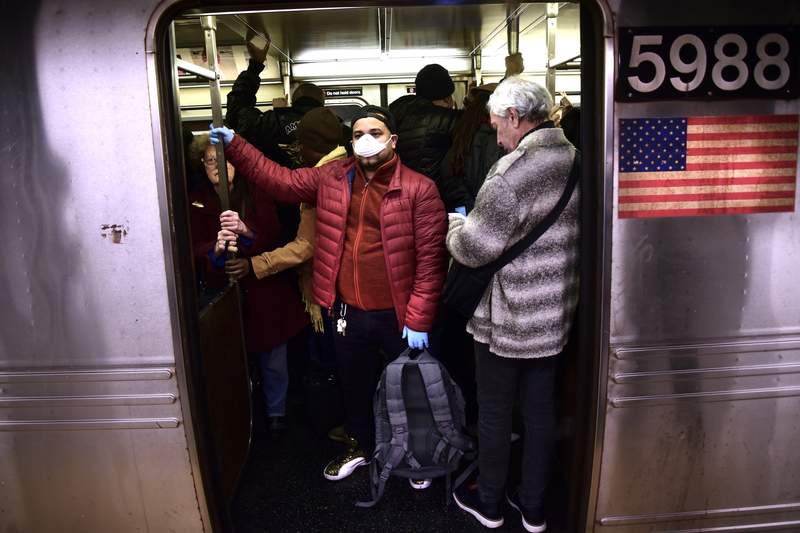(Bloomberg) -- The pandemic-induced downturn initially had hints of being the sharpest but shortest U.S. recession on record. Now there are increasing signs of economic scarring that resemble past slumps.
Beneath a headline number showing a better-than-expected gain in July jobs, the government’s employment report contained indications of underlying weakness.
Payrolls remain 13 million below pre-pandemic levels and the number of people out of work for 15 weeks or longer more than doubled from the prior month, to 8 million. The labor-force participation rate fell for the first time in three months and the number of people discouraged by job prospects hit a five-year high.
Such figures, along with recent high-frequency indicators pointing to a pause in the recovery, suggest the pandemic slump will be more drawn-out.
With lawmakers failing to extend supplemental unemployment benefits that have supported incomes and spending, President Donald Trump signed orders over the weekend to provide limited relief that faces questions over its implementation and legality.
Reports due later this week on July retail sales, industrial production and consumer sentiment are expected to confirm a moderating pace of economic activity.
“There’s definitely a lot of work to be done in getting the economy back to where it used to be,” said Michael Feroli, chief U.S. economist at JPMorgan Chase (NYSE:JPM) & Co.
Trump’s latest moves create “some downside risk to the outlook as it removes pressure on Congress to agree to something more comprehensive,” he said.
Read more:
- Struggling Economy Gets Only Limited Help From Trump Actions
- Fed’s Evans Says More Fiscal Support ‘Incredibly Important’
- Better-Than-Expected U.S. Jobs Data Seen as Last of ‘Easy Gains’
- Biden Needs Fed’s Powell on Board to Fix Racial Wealth Gap
Goldman Sachs Group Inc (NYSE:GS). economists took a different view, saying in a note that because the new jobless benefits could run out in a month, it could raise pressure on lawmakers to do more.
In any case, some of the long-term economic and labor-market effects of the virus have already been set in motion, such as a lengthening duration of unemployment. Others will take longer to develop: wage gains coming under pressure, the impact on female labor-market participation as schools extend virtual classes and the effect of shaky job prospects for recent graduates.
Unemployment Duration
The number of Americans who have been unemployed for at least 15 weeks grew by about 4.7 million people in July. That was the biggest monthly increase in records back to 1948 and highlights the need for fiscal relief.
In the wake of the last recession, the number of people in the 15 weeks or more category hit a record 9.1 million in 2010, and it took four years to reduce that by half. Just how fast Americans will be able to get back to work this time is unclear.
“When we look at where we go from here, we’re past that mechanical bounceback,” said Sarah House, senior economist at Wells Fargo (NYSE:WFC) & Co. “Now you have to justify, from a cost perspective, bringing back new workers. And for that you need revenue to increase” and economic activity to improve, she said.
Economic Spillover
The economy is forecast to rebound in the third quarter but recovering to pre-pandemic levels could take years. Meanwhile, the replacement of the extra $600 in weekly jobless benefits with a smaller amount and a lack of new funding for the Paycheck Protection Program for small businesses means less spending and investment in the economy.
“This slowing trend in the economic recovery is deeply concerning,” said Daniel Zhao, senior economist at jobs website Glassdoor. “The risk is that will spill over to businesses and the rest of the economy, as well as households.”
And Trump’s order to provide more stimulus “doesn’t change the overriding fact that the public health crisis will determine the trajectory of the economy,” Zhao said.
What Bloomberg’s Economists Say
“Following an unprecedented swing from severe drop to sharp rebound, the economy is entering more conventional recession dynamics. A prolonged period of elevated unemployment and subdued participation in the labor market will weigh heavily on income growth, personal spending and top-line growth.”
-- Yelena Shulyatyeva, Andrew Husby and Eliza Winger
Read more for the full note on the jobs report.
Workforce participation has also come under pressure. The overall participation rate and that of prime-age workers, or those age 25-54, edged lower in July.
At the start of the year, the rate among prime-age workers had finally clawed its way back to levels more consistent with those prior to the 2007-2009 recession. That took over a decade and was driven by a key group -- women.
Around downturns, participation tends to decrease at least in part because of a lack of job opportunities. But for women in particular, the closing of childcare businesses, summer camps and uncertainty around school reopenings adds pressure on them while working from home, or after being laid off.
Job losses may also have a deeper impact on Black workers, like in the last recession. While the White unemployment rate has already dropped by 5 percentage points since its pandemic high in April, the rate for Black Americans has declined by just 2.2 points since its pandemic high in May.
The longer it takes the economy to recover, the worse it will be for wages as a weak jobs market reduces worker bargaining power. For the employed, that may mean a skipped raise or even a pay cut. For the jobless searching for a new position, an enormous pool of applicants may mean accepting less pay.
©2020 Bloomberg L.P.
